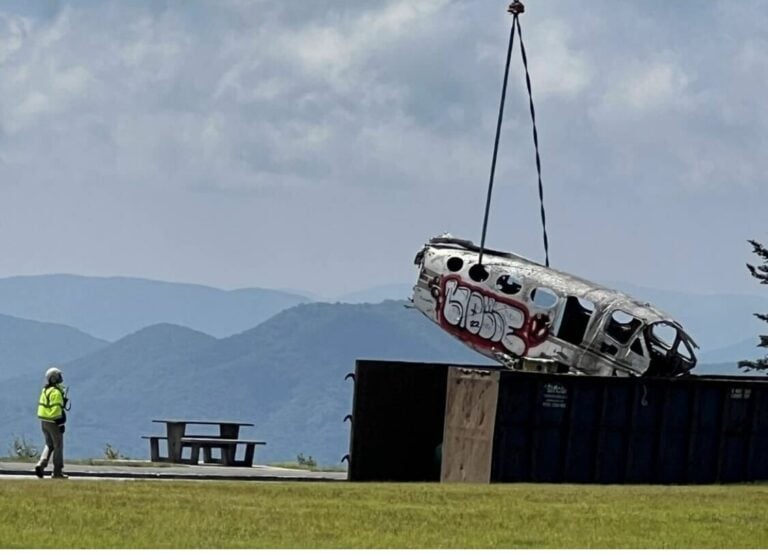
You’ve heard these myths before. Your uncle likes to repeat them at the dinner table, corporations tout them in TV ads, and politicians spew them during stump speeches. They’ve been used over and over to justify poor environmental policy, and they’re just plain wrong. Here are the top ten most dangerous eco-myths.
Clean coal technology will solve our energy problems.
The coal industry has spent millions marketing their new “clean coal” technologies to the public. In 2008, the American Coalition for Clean Coal Technology spent $40 million on TV and radio ads. They’ve also lined political pockets: leaders from Obama to John Boehner tout clean coal as a viable workhorse for our energy needs.
Yet the truth is this: clean coal does not exist—and never will. According to MIT, the leader in clean coal technology research, the first coal plant able to capture its carbon emissions won’t come online until 2030 at the earliest, which makes carbon capture and sequestration a theoretical possibility at best.
But here’s the real kicker: clean coal isn’t even clean. Even if coal plants were able to capture their carbon emissions, turn them into liquid form, and inject them into the ground or ocean (which presents its own environmental pitfalls), we still would end up with even more polluted skies and waters. That’s because carbon is just one of over 100 toxic pollutants emitted from burning coal—including mercury, smog-forming nitrous oxides, and particulate matter—which are responsible for higher rates of birth defects, asthma-related illnesses, and heart and lung diseases. Carbon capture does nothing to mitigate these other pollutants. But it does increase the amount of mountaintop removal mining, sludge ponds, buried streams, coal ash dams, and other toxic legacies—hardly deserving of the word clean.
Going green is too expensive.
Going green is actually the smartest way you can save money right now. The golden rules of the “green lifestyle” are reuse and reduce, a message that often gets lost in the eco-chic hysteria of our consumer culture. You really want to reduce your carbon footprint and live green? Buy a smaller house, a smaller car (or no car), and less plastic crap. Organic vegetables are tasty, so why not grow your own? Watch less TV and only turn on one light in your house at a time and you’ll save a fortune on your energy bill. Ride the bus—it’s cheaper than a tank of gas. Buy used gear. Get your clothes from a consignment store. Yes, that soy-based paint is more expensive than latex, but the cheapest and greenest paint is the paint you don’t buy. There’s a difference in living green and buying green, so you have to ask yourself: are you going green to make a difference, or are you going green so you can get the newest, shiniest stuff?

Alternative energy is too expensive and coal is cheap.
Even if you set aside the environmental and public health costs of coal-fired power (how much are healthy lungs worth, anyway?), solar and wind are cheaper than coal when all of the government subsidies for coal are removed. Coal power claims to deliver power at $2 per kilowatt, but that price includes billions in federal funding. The only so-called clean coal power plant in the works—an experimental station called FutureGen in Illinois—is already pricing out at $6 per kilowatt, and that does not even include the cost of extracting and transporting the coal. A coal plant lasts only 20 years before it must be upgraded, and the coal must constantly be mined and transported.
Meanwhile, right now most solar providers can deliver power to the company for roughly $3 per kilowatt. And that energy continues indefinitely into the future, with no cost of mining or transport.
And renewable energy becomes cheaper with every new solar panel or wind turbine installed, while coal prices—because coal is a finite source—will only continue to climb. Coal is actually going to cost us a fortune: The Department of Energy just spent $2.4 billion on clean coal research—the largest increase in public funding for coal research in 25 years. Meanwhile, a new study by the University of Massachusetts shows that investing in clean energy creates four times more jobs than investing the same amount of money in the coal industry.
Green power can’t meet U.S. energy needs.
800 gigawatts—that’s how much power America uses. To suggest that alternative energy sources like wind and solar can’t provide that amount of energy is simply wrong. Jon Wellinghoff, the head of the Federal Energy Regulatory Commission, recently told Congress that the U.S. may never need to build a new nuclear or coal-fired power plant again because renewable energy and improved efficiency can meet America’s future energy needs. He cited the 500-700 gigawatts of wind in the Midwest and ample solar in the Southwest.
Interior Secretary Ken Salazar recently said wind energy replacing coal is “a very real possibility.” The world’s largest wind farm, Titan Wind Project in South Dakota, will have 2,000 turbines producing 5,050 megawatts, enough to power every home in South Dakota and North Dakota. In 2008 alone, there was a 50 percent increase in the installed wind capacity in this country, with more projects scheduled to come online in 2009 and 2010.
As for solar, it alone could supply 90 percent of our energy needs, according to the Department of Energy’s own data. Every state in the Union is an ideal candidate for solar power. The 800 gigawatts that America needs translates to 17 square miles of photovoltaic panels per state. It sounds like a sizable amount of real estate, but there’s a movement afoot to build these solar centers in industrial brownfields. There are five million acres of abandoned industrial sites throughout the country. Many of them are situated near large population zones, which would eliminate the need to build extensive electric grids.
The population boom in undeveloped countries threatens our resource supply.
Global population is a serious concern. There are an estimated 6.7 billion people in the world right now, and the U.N. projections put that global population at 9.2 billion by 2050. Whether the earth can sustain 9 billion people is at best debatable, and the rapid growth in developing countries is troubling.
But the scariest statistics hit closer to home. The United States is growing at a faster rate than almost every other developed country in the world. Our population has doubled in the last 60 years, and we’re expected to add another 100 million Americans by 2050.
One hundred million more people doesn’t seem like a lot when India is expected to grow by 500 million, but we’re talking about 100 million Americans, who consume a quarter of the world’s natural resources. We’re worried about India’s population boom, but Americans consume 35 times more resources than the average Indian. Our resource consumption is already taking a toll: Half of the U.S. population relies on groundwater for drinking water. Groundwater tables have dropped hundreds of feet across the U.S.
 The U.S. shouldn’t cap carbon emissions until China addresses the issue.
The U.S. shouldn’t cap carbon emissions until China addresses the issue.
There is no doubt that China’s carbon footprint is huge. In the last four decades, China’s carbon footprint has quadrupled, and recently, China became the world’s greatest emitter of carbon dioxide, just surpassing the U.S. But when you consider the population difference, the massive country doesn’t even come close to our level of emissions. There are one billion people in China, emitting essentially the same amount of carbon dioxide as the 300 million people in the U.S., and we’ve been leading the carbon emissions for over 100 years.
It is no longer an option to wait for China to address global warming if the world as a whole is going to avoid the worst impacts. As the largest piece of the emissions pie, and as the wealthiest and most technologically advanced country in the world, the U.S. has to lead the way in reducing emissions. We already have the technology to do so: a study by the international auditing agency McKinsey and Company found that if the U.S. just adopted stricter energy efficiency codes in its buildings and appliances, we could reach one third of our greenhouse gas reductions target.
The Prius has a bigger carbon footprint than a Hummer.
This popular myth is based on a “study” funded and produced by the auto industry that wasn’t a study at all. An independent group, the Pacific Institute, did a thorough analysis and found that much of the data was grossly manipulated to create the desired outcome. No peer review was conducted on the survey either, which enabled the autos to make numerous false assertions and assumptions. For example, the Hummer was given a life cycle of 35 years and 379,000 miles, whereas the Prius was given a lifecycle of only 12 years and 109,000 miles.
Temperatures were hotter in the Middle Ages than now.
Flat out false. Temperatures have indeed fluctuated over the centuries, but the twentieth century was the hottest on record. According to the National Oceanic Atmospheric Administration, there was a “warm period” between the 9th and 13th centuries where temperatures were warmer than the 15th to 19th centuries. However, the temperatures during this Middle Age “warm period” weren’t as high as the temperatures we experienced in the late 20th and early 21st centuries. We’re now living in the warmest period the earth has seen in at least the last 1,200 years. •







